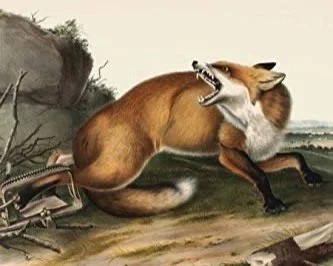James Audubon is best known as the ground-breaking ornithologist and artist who created The Birds of America, a seminal catalogue of the continent’s avian species. Less familiar is his work on mammals, The Viviparous Quadrupeds of North America, which he co-authored with the naturalist Reverend John Bachman.
Following in the wake of his successful bird book, Audubon’s motives for doing the mammal project were “mainly fame, ambition and opportunity,” according to editors Daniel Patterson and Eric Russell who compiled this anthology with notes and commentary. They view the two volumes of lithographs and three volumes of essays originally published as The Viviparous Quadrupeds of North America as equally important but much less appreciated than The Birds of America.
The title of their anthology was inspired by a phrase Audubon and Bachman used seven times in Quadrupeds, “indicating their awe or frustration in the face of an animal’s ability to survive various forms of violence.” In their experiments on animals, they matter-of-factly describe how they tortured, maimed and dismembered several species and were amazed how long the creatures struggled against death. The conceptual weight of these passages is not only challenging to modern sensibilities but revealing of an antebellum view of nature that both men shared.

